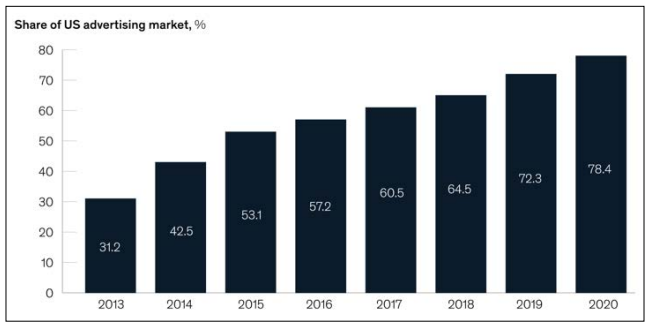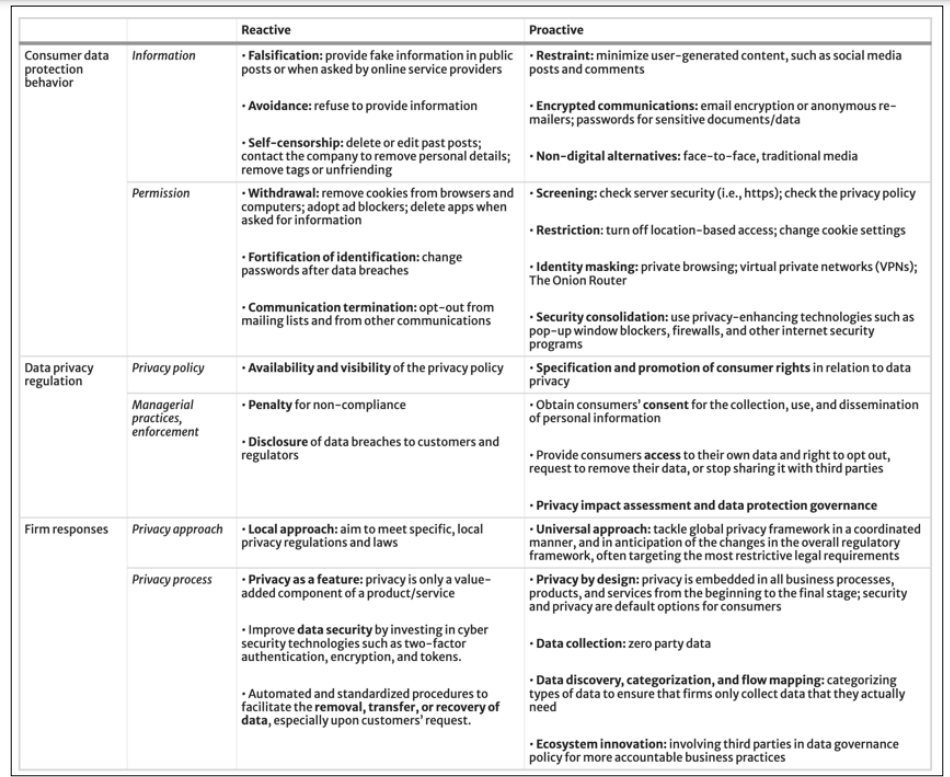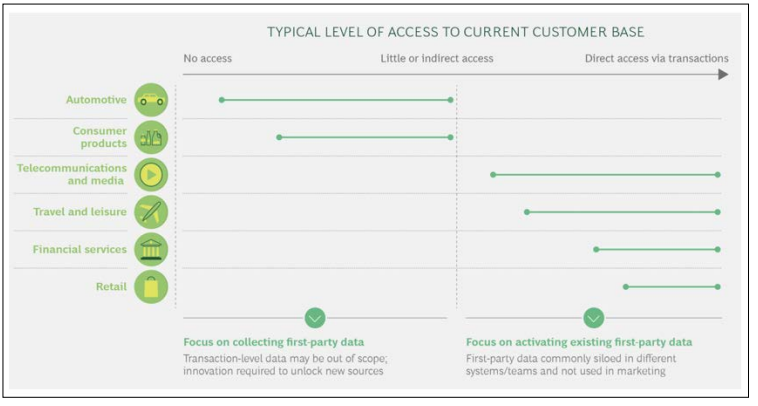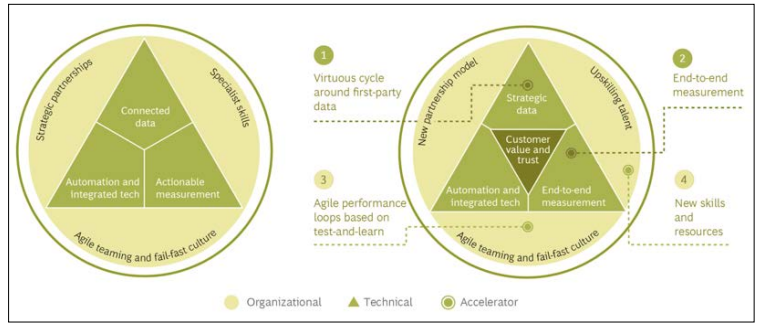Author(s): Ananya Jha
ABSTRACT
The digital marketing landscape is undergoing a profound transformation as privacy concerns and regulatory changes have brought about the decline of third-party cookies. This transition ushers in a new era in which advertisers can no longer rely on the comprehensive tracking capabilities that these cookies provided. This research paper explores the challenges and opportunities facing marketers in the post-cookie era. It examines the importance of building trust with consumers by prioritizing transparency in data collection and usage, emphasizing a clear value exchange to encourage data sharing.
Furthermore, the paper explores strategic adjustments required to reach target audiences. It analyzes the shift towards first-party data, focusing on building direct relationships with customers to gather insights. It also examines the potential of emerging technologies to create personalized, privacy-conscious marketing experiences. Finally, the paper highlights how success in this evolving landscape depends on prioritizing user privacy, delivering value alongside transparency, and embracing innovative marketing approaches.
First-party cookies are typically produced and stored on the user’s device by the website that the user is viewing. Such cookies are frequently utilized to improve user experience and some of the site’s essential capabilities. For example, first-party cookies can recognize returning customers so that they don’t have to use the login and password to check in on subsequent trips. Third-party cookies are generated and stored on the user’s device by a website other than the one being visited. They are created when a user accesses a website that contains parts from other sites, such as third-party photos or advertisements.
For example, whenever a person views an embedded video on a website, the video server will store cookies on their device. These cookies monitor user preferences and recommend related films when they visit the same video website.
The post-cookie era calls for marketers to embrace a mindset of experimentation and agility. Staying updated on the latest technological innovations and regulatory changes will be essential for maintaining success. Successful marketers will be those who focus on nurturing customer relationships, understanding the value of privacy, and delivering genuine value in every interaction. It requires a collaborative approach where marketers must work closely with data analytics and infrastructure teams, data scientists, and other stakeholders to create a holistic data strategy that prioritizes privacy, transparency, and value for customers.
For years, the success of digital marketing heavily relied on third- party cookies, small text files that websites store to track online behavior across various sites. This allowed marketers to target advertising, personalize user experiences, and measure campaign effectiveness. However, the tide is shifting. Rising privacy concerns, regulatory bodies like the GDPR, and tech giants such as Apple and Google phasing out third-party cookies have created a sense of urgency for marketers to adapt to the post-cookie world.
This paper investigates how marketers can evolve their strategies to remain effective while respecting consumer privacy. It places a strong emphasis on re-establishing trust with customers through transparency, clear communication about data practices, and demonstrating the value exchange in customer interactions.
This literature review examines relevant scholarly work and industry reports to analyze the challenges, potential solutions, and the importance of trust in marketing strategies for the post- cookie world.
The removal of third-party cookies will make it much more difficult for advertisers to track users around the internet and deliver them customized advertising messages. Furthermore, the elimination of cookies will make it more difficult for publishers to monetise their websites by eliminating the ability to offer targeted advertising [1].
By 2022, rules aimed at protecting consumer privacy-particularly the California Consumer Privacy Act-and large technology businesses will require users’ explicit permission to share and use data generated by digital interactions. Because consumers are often uninformed of how their data is used and may not consent to sharing their data, the $152 billion US digital advertising sector could lose access to most third-party data, which has driven programmatic advertising [2].

Figure 1: Spending on Programmatic Media has Increased as a % of US Advertising Market [2]
Data monetization and data sharing, which are enabled by organizations’ use of digital technologies, can intensify technology-privacy issues among customers, regulators, and businesses. Figure 2 depicts a framework for understanding their individual ways to handle such tensions, which is based on structuration theory.

Figure 2: Privacy Responses Among Consumers, Regulators, and Firms [3]
The most prepared advertisers create consumer experiences in which consumers voluntarily consent to sharing data (for example, transparency about data collection, insight into value exchange, and data collecting seamlessly integrated into user experience) [2].
The ideal experience varies greatly by industry, yet the demand for it drives many of the advertisers to innovate. For example, the most sophisticated organizations have separate customer experience segments that collaborate with media, IT, and legal to responsibly acquire and handle consumer data [2].
Building relationships is a crucial goal for products and services that are worth considering. However, for products with minimal attention or no direct link to customers, lifestyle content is a frequent workaround and can be branded as a separate digital experience from the parent brand, such as a CPG company’s cookery website [2].
Harnessing First-Party Data: Advanced marketers link all data sources to have complete understanding of their target audience in order to enable personalized messaging and customer experience [4]. However, as illustrated in Figure 3, access and integration of first party data largely varies across industries and across companies as well

Figure 3: Variation in First Party Data Access Across Industries [4]
Subscription based companies like Netflix and New York Times automatically collect first party data at the time of account signup. Based on our consumption pattern, Netflix provides personalized recommendations and viewing experience.
Other industries and companies may not have such a straightforward relationship with data or may not have all the data pipes connected. This requires an organizational drive to invest in technology and align business strategy to measurement and marketing strategies as illustrated in Figure 4.

Figure 4: Digital Marketing Enablers Across the Organization [5]
In addition to strong data integration of first party data, there needs to be increased adoption of conversion modeling and predictive analytics based on the first party data in order to improve marketing effectiveness measurement. This also calls for a culture of agility - agility in terms of staying updated with new regulations, agility to test, learn and scale new technologies and agility in the organization to embrace the new measurement world which could be less unified and more dependent on predictive metrics instead of deterministic metrics.
An example beyond the subscription business model is North face who were able to leverage centralized tagging and analytics to quickly adapt to consumer needs and their search behavior within the site to catalog their products according to how the consumer was looking for it. This enabled them to 3X revenue and conversions. Usage of first party data with robust data integration not only influences the website customer experience but also informs the personalized creative messaging strategy thereby improving marketing effectiveness and business outcomes.
The deprecation of the third-party cookie is a catalyst for a more privacy-centric and responsible form of digital marketing. While it marks the end of an era, it should be viewed as the start of a more ethical, consumer-centric approach to digital marketing. This new era necessitates a mindset shift for marketers and requires investment in new technologies, data infrastructure and approaches. By demonstrating transparency regarding data collection and adhering to clear consent mechanisms, marketers can rebuild confidence with customers. Prioritizing first-party data and providing customers with compelling value in exchange for their information will be paramount. Investing in emerging technologies, such as AI-powered personalization and alternative targeting techniques, will be crucial for navigating this landscape [6,7].
The ongoing evolution of the digital marketing landscape and changes in privacy regulations pose both challenges and opportunities for future research and exploration. Here are some key areas for future work:
By focusing on the core principles of trust, transparency, and value, marketers can successfully navigate these changes while delivering personalized and engaging experiences that respect user privacy and build long-term customer relationships.
